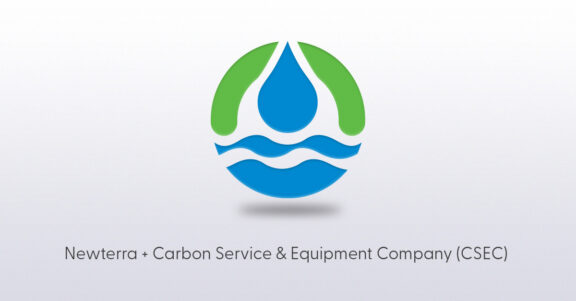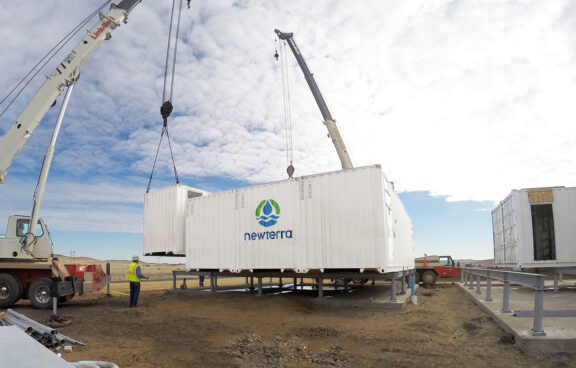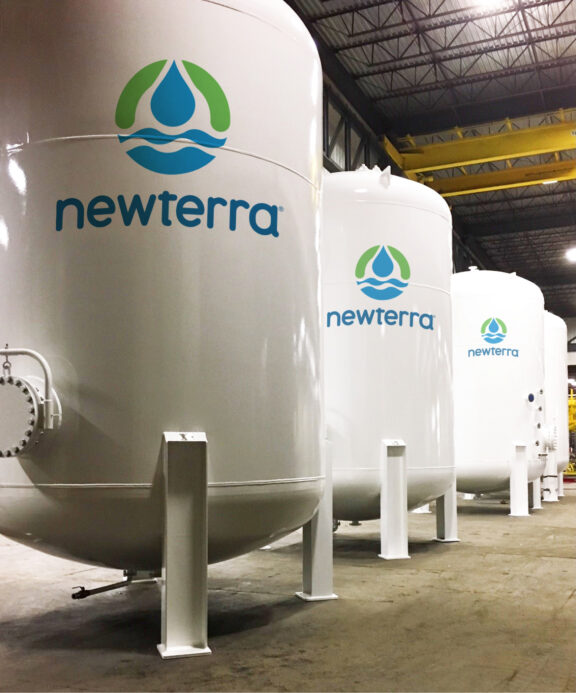Much of the progress on wastewater effluent quality under the Clean Water Act has focused on centralized facilities in larger cities. Now, decentralized systems are expanding options for municipalities, developers, and engineers to support high-quality wastewater treatment in locales that can’t sustain conventional septic systems or make it too costly to build or access centralized wastewater treatment plant (WWTP) or water reuse facilities.
New Options, New Opportunities
Customized packaged WWTPs based on established technologies proven over the past 20 years make it easier for municipalities to address a variety of public health, environmental, community growth, and economic concerns:
- Supporting Development Opportunities. The availability of prefabricated modular systems that serve from 300 to 3,000 users makes it practical to support sustainable economic development and population growth under circumstances where that was not previously feasible (Figure 1).
- Retrofitting Aging Infrastructure. Older towns or developments with failing septic systems or outdated WWTP facilities can have access to modern wastewater treatment via affordable, easy-to-deploy packaged solutions.
- Providing Remote Coverage. Municipalities can now offer sewer service to remote locations where extending collection systems from their current WWTPs or building new conventional facilities would be cost-prohibitive due to extreme distances or geographic barriers.
- Enabling Water Reuse. Packaged wastewater systems can even support localized water reuse solutions for flushing toilets, landscape irrigation, cooling towers, aquifer recharge, etc. in water-starved locations. They can be installed within a single building to support onsite reuse or connected to ‘purple-pipe’ systems serving commercial complexes or residential developments.
The specification and implementation of decentralized WWTP solutions have economic as well as physical implications. That is why decision-makers with varying degrees of familiarity in wastewater operations can all benefit from discussing alternatives with a single-source supplier offering experience across a wide range of turnkey solutions. These include applications from conventional system alternatives to municipal/private development septic system replacement to seasonal applications with variable requirements.

Figure 1. Prefabricated solutions configured from previously engineered design concepts reduce turnaround times and costs for multiple aspects of decentralized wastewater solutions, leading to lower total installation costs and quicker commissioning schedules.
Demystifying The Performance Of Decentralized Solutions
Documented performance from scores of installed systems serving applications ranging from 5,000 GPD to 1.5 MGD demonstrates the versatility, efficiency, and cost-effectiveness of properly sized packaged WWTP solutions:
- Aggressive Effluent Standards. Packaged activated sludge systems fitted with membrane bioreactor (MBR) technology and UV/chlorine disinfection capabilities can achieve regulatory effluent requirements for direct discharge to local waterways — down to < 5.0 mg/L for biochemical oxygen demand (BOD), < 5.0 mg/L total suspended solids (TSS), < 0.2 nephelometric turbidity units (NTU) of turbidity, and >99.99 percent bacteria, parasite, and virus removal. With enhanced nutrient removal design, packaged WWTPs can even achieve stringent regulatory requirements of < 0.05 mg/L for total phosphorus and < 3.0 mg/L for total nitrogen.
- Minimal Operating Demands. Automated systems with built-in feedback, remote access monitoring, and supervisory control enable systems to operate without permanent onsite personnel. Beyond that, built-in alarms for out-of-spec conditions automatically go to designated service personnel as well as the supervisory office for immediate smartphone or online remote assessment and decision-making.
- Versatile Operational Approaches. Because a properly designed and sized packaged wastewater treatment solution automates most daily operations, labor requirements can be minimal. Those requirements can be fulfilled in a variety of ways — ranging from several weekly visits by an existing public works employee to an affordable, complete, contracted service from an experienced third-party supplier. Added sludge storage capacity can even extend sludge management requirements to months between removal, and options for onsite treatment and dewatering can eliminate liquid waste hauling, further reducing disposal costs.
- Properly Sized Modular Solutions. An experienced packaged system provider can specify an affordable wastewater treatment system to accommodate current wastewater volume and composition along with flexibility for municipalities and consulting engineers to compare multiple future growth potential options. One approach to a cost-effective solution is the use of pre-engineered systems, using standardized packages that allow for the flexibility to address specific project requirements without entirely reinventing the wheel.
Having foresight to incorporate core sensing and control systems into the initial modules, then expanding filtration module capacity as demand grows, keeps startup costs low. It also makes it easier to fund the capital costs of future expansion from initial customer revenue — a desirable feature for developers and municipalities alike.
- Skid Systems For Small Applications. For small-scale applications or on-premise water reuse applications, the ability to incorporate appropriate water treatment technology into self-sufficient skid-mounted packages makes it easy to upgrade capabilities within an existing structure or site or for new builders to meet water efficiency and requirements and environmental certification (e.g., LEED).
- Cost Efficient For Private Financing. Because design and operating costs are readily known from experience across a wide range of applications, it is easy to project financial implications for multiple implementation approaches. Also, the ability to start with a minimal capacity design while retaining options for future expansion makes it easier to fund an initial system investment privately, if necessary (Figure 2).

Figure 2. One of the most valuable aspects of a modular packaged system design is that a long-range design concept can be planned from the start, but phased execution can be implemented with a ‘building-block’ approach, as needed, leading to smaller cash outlays initially and over the long run.
Reaping The Benefits Of Decentralized Treatment
Self-contained modular WWTP systems are a viable alternative for smaller applications where conventional in-ground structures are impractical or cost-prohibitive. They offer a wide range of installation and operational advantages, such as:
- Scalable, Redeployable Designs. Including all necessary capabilities — plus built-in redundancy — in rugged, standard-size shipping container modules makes packaged WWTPs easy to ship, deploy, upgrade, and redeploy according to local needs.
- Rapid Deployment With Minimal Site Work. With pre-engineered treatment train designs, in-house fabrication, and modular construction, packaged WWTPs offer faster turnaround than conventional design and construction. The self-contained pre-wired, pre-plumbed, and pre-tested modules reduce site work to pouring a concrete pad with water and electrical hookups (Figure 3).
- Low Maintenance. With automated operation, onsite operator involvement is limited to routine weekly visits for operational checkups and supplies replenishment, monthly or quarterly chemical-enhanced in-situ membrane cleanings, and semi-annual removal and manual cleaning of membranes.
- Specialized/Industrial Applications. In addition to satisfying traditional municipal sewage needs, packaged WWTP designs can also incorporate specific treatment train capabilities to handle oil, grease, and higher BOD loads from food preparation facilities. They can also be configured to treat wastewater involving process chemicals, high contaminant levels, or demanding pH requirements from heavy industrial operations such as mining or manufacturing. In addition, some applications with high pharmaceutical and endocrine-disruptor loading (e.g., hospitals and retirement homes) can greatly benefit from the high quality of MBR treatment followed by appropriate post-treatment.

Figure 3. Simplified site preparation (left) and fully integrated equipment and controls in each module (right) make it easier to complete the installation and commission a fully functional operation in significantly less time than conventional construction.
To learn more about specific opportunities and benefits of packaged WWTP systems for decentralized locations, review the introduction and Q&A segments of this recorded webinar. Also, read how this municipality evaluated the merits of decentralized communal services in depth.


